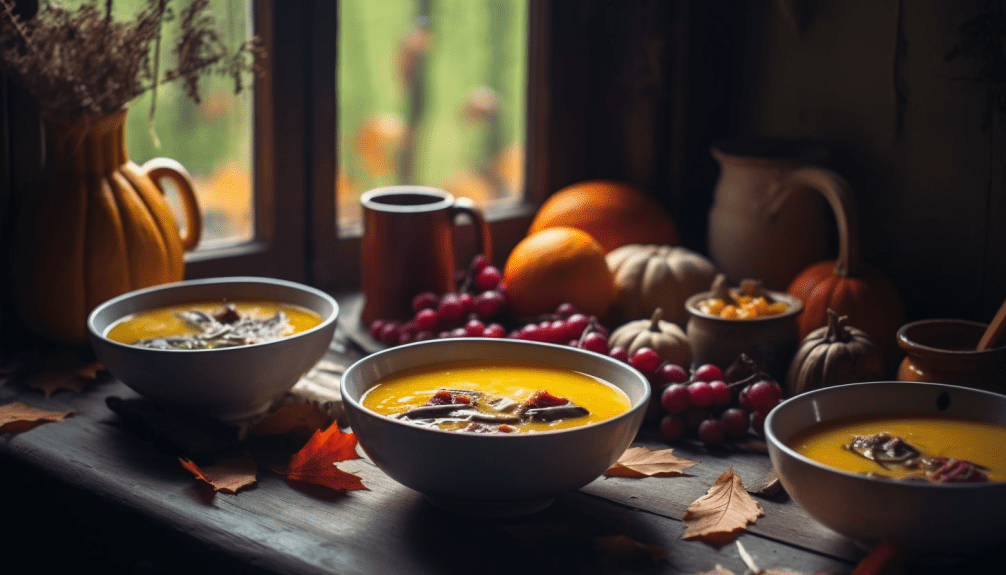Varenyky is the classic Ukrainian national cuisine dish that has come down to Ukraine from ancient times without much foreign influence. Indispensable on the Ukrainian table, varenyky were more than just a dish – they served as a form of family communication and protection. Earlier, women and girls gathered to cook the dish, knead the dough, shape varenyky, and eat them together, all accompanied by jokes and songs.
People believed that kneading the dough symbolized the process of creating the universe. It represented the profound role of women as mothers and progenitors, shaping and nurturing the world and ensuring the perpetuation of the human race.
Celebrating new life and livestock birth, people made varenyky to bless the animals to be as plump as a varenyk. Varenyky were frequently served as a ritual dish at winter celebrations, memorial services, weddings, and other holidays. In other words, varenyky were not just an everyday food but a symbol of a significant life period or completed cycle.
Varenyky in traditional holidays
For example, bridesmaids brought varenyky to the bride on the second day of a wedding. Here the dish was seen as a symbol of “conception“: varenyk symbolizes wealth and abundance and future children born in a new family.
Women often brought varenyky when they went to see a friend who had just given birth. They gave the new mother this simple present and wished, “May your baby be as plump as a varenyk.”
The winter holidays, such as Christmas and New Year, were the times to commemorate the deceased. Traditional festivities included serving kutia (a ceremonial grain dish with sweet gravy) as a ritual sacrifice, cabbage rolls, fish, stuffed cabbage, and varenyky. According to folk beliefs, the latter combined feminine and masculine elements and were a source of newly formed energy of attraction, love, and life.
The variety of varenyky fillings has given this dish a unique taste for many centuries: cottage cheese, boiled or fried cabbage, potatoes, mushrooms, grated beans, viburnum, wheat porridge, buckwheat porridge with cheese, blueberries, cherries, mashed pears, mashed dried fruits, poppy seeds, flour crumbs, and many others. In the Poltava region, you can taste varenyky with boiled peas mashed with viburnum.
Varenyky are usually served with sour cream or oil and fried onions, regardless of their filling. Sweet ones, with cherries, poppy seeds, apples, plums, and berries, are sprinkled with sugar or served with berry syrups or honey, with sour cream on the side.
10 facts about Ukrainian varenyky
- Traditional Ukrainian varenyky are four times larger than Italian ravioli.
- Writer Mykola Gogol in his famous “Viy” mentions varenyky as big as 30-40 cm in diameter, approximately the size of a hat.
- The Jewish poet Saul Chernikhivskyi who lived in Ukraine for a long time liked traditional Ukrainian dishes so much that he dedicated a poem and a musical idyll to them called “Varenyky.”
- The name “varenyky” is a typical Ukrainian term, while “pyrohy” is a term used in western Ukraine (Halychyna region). People believe this dish existed even in paganism and had its unique symbolism.
- In ancient times, Ukrainians associated varenyky with the moon because of their similar shape and considered them sacrificial food, carrying a symbolic significance. Varenyky with cheese were offered as a sacrifice near spring water wells.
- The most popular fillings for varenyky are potatoes, cottage cheese, cherries, blueberries, and other types of berries. However, Ukrainian culinary heritage includes unusual combinations, such as dumplings with fern or horseradish filling.
- Varenyky, beloved by the Ukrainian diaspora, has been immortalized in stone in Glendon, Canada, as a tribute to their cherished meal. There is a monument to varenyky on the city’s central square, and it is considered the city’s official symbol! This culinary wonder made of stone is 9 meters tall and weighs nearly three tons.
- The only monument to varenyky in Ukraine was installed in Cherkasy in 2006. Dismantled in 2013, it is now in a private collection.
- Every year, a traditional Varenyky festival takes place in Bukovel. In 2013, a snow monument to varenyky was built, which entered the “Bukovel Cable Car” record book as the world’s largest varenyk made of snow.
- During his visit to Ukraine, Bill Clinton, the 42nd President of the United States, had the pleasure of trying varenyky filled with cherries. The renowned food enthusiast was delighted and declared that varenyky had earned a coveted spot on his “Must be served” list.
In conclusion, Ukrainian dumplings, known as varenyky, are significant in Ukrainian culture and cuisine. More than just a delectable dish, they embody symbolic meanings. Varenyky proudly showcase Ukraine’s diverse culinary heritage, offering a range of fillings from traditional cheese and cherry to unique combinations like fern or radish. From literary references to monumental sculptures, these dumplings have left a lasting impression on Ukrainian culture and have even gained recognition beyond Ukrainian borders.







